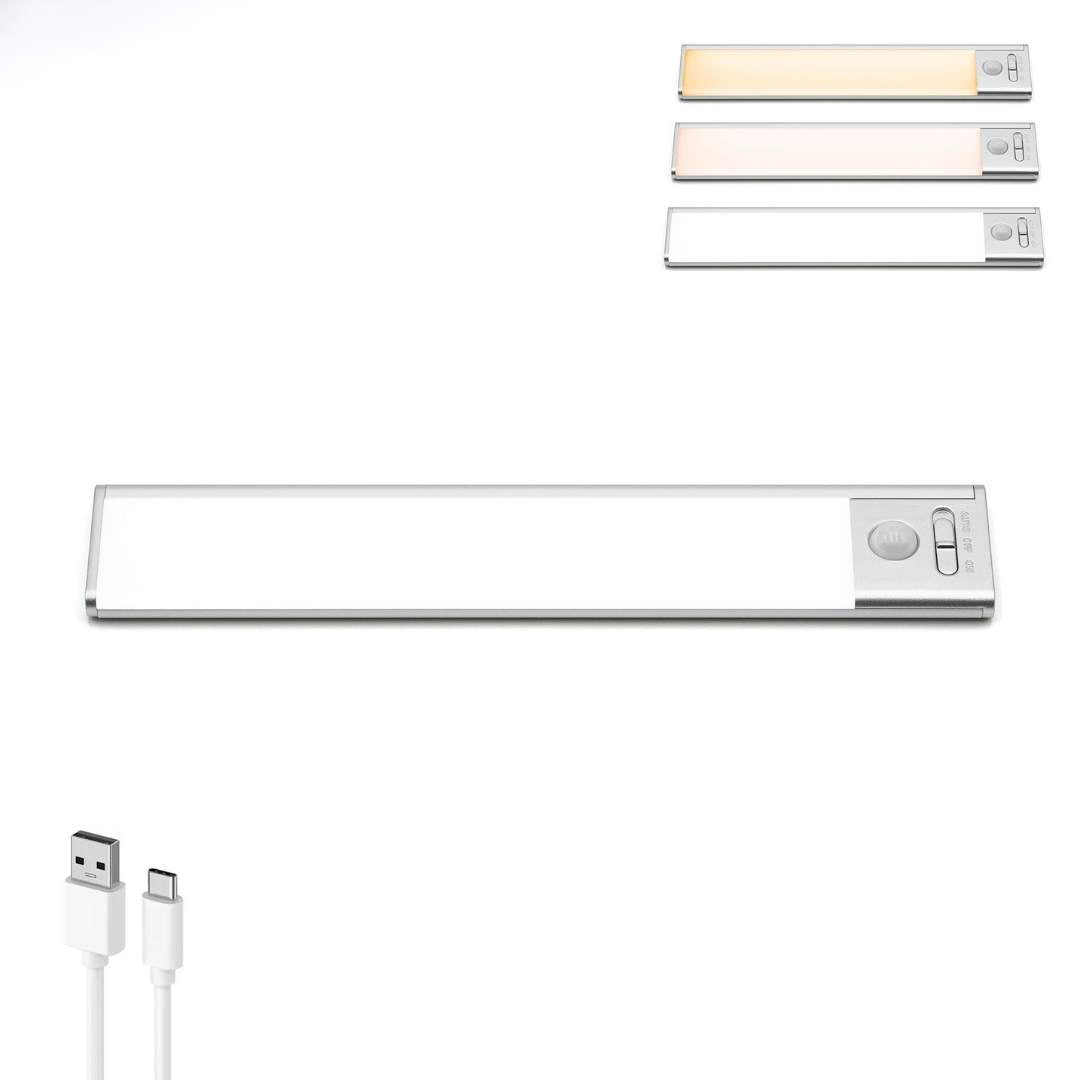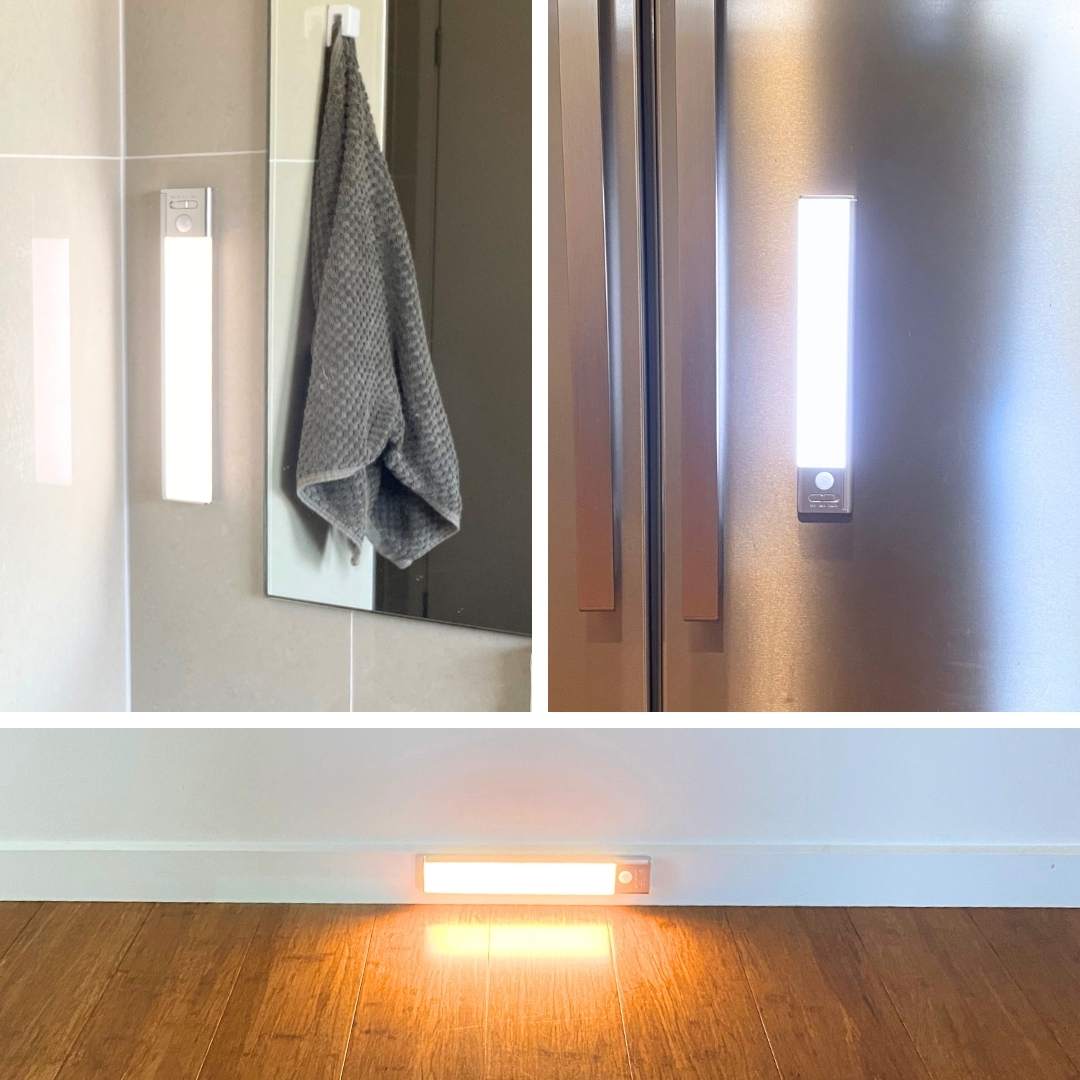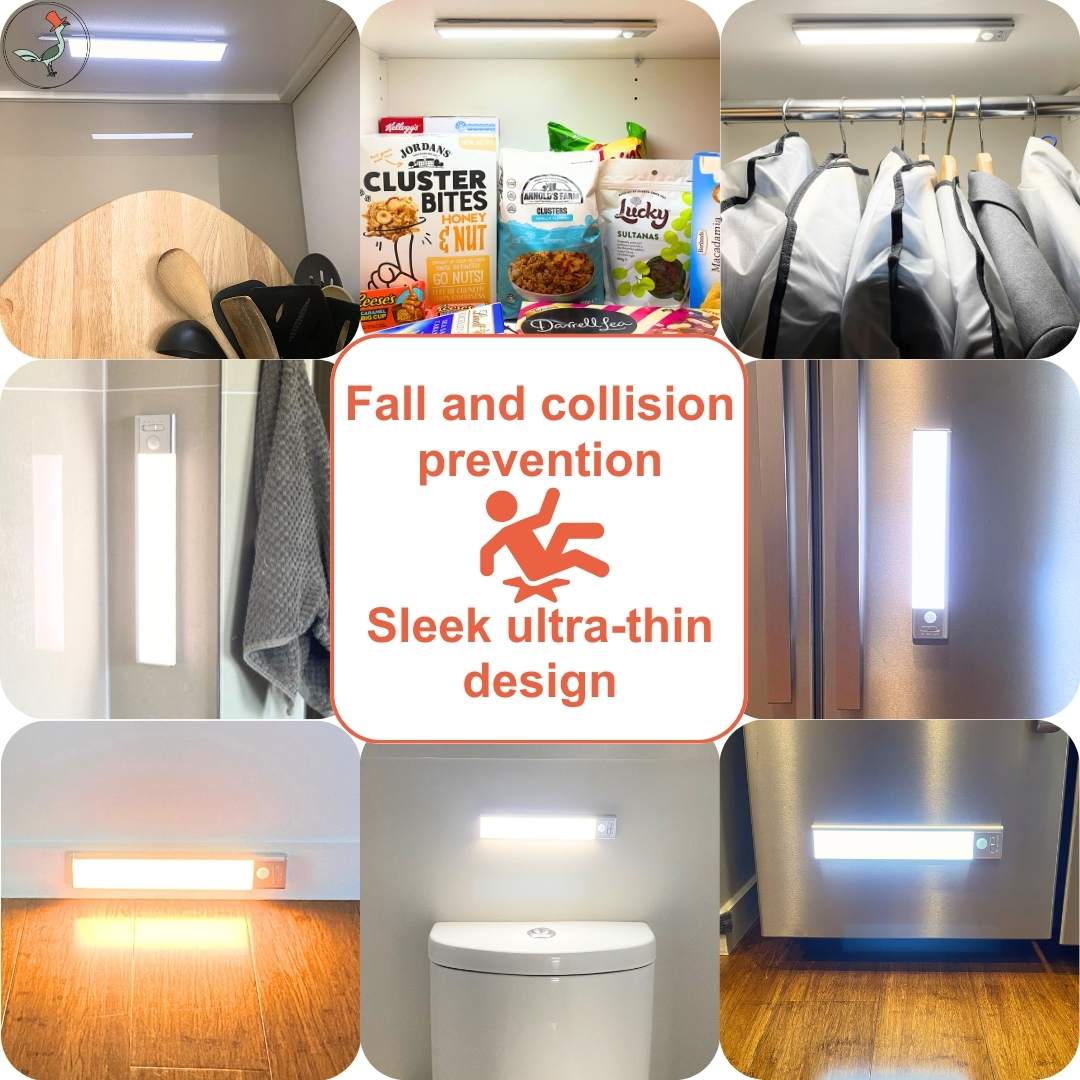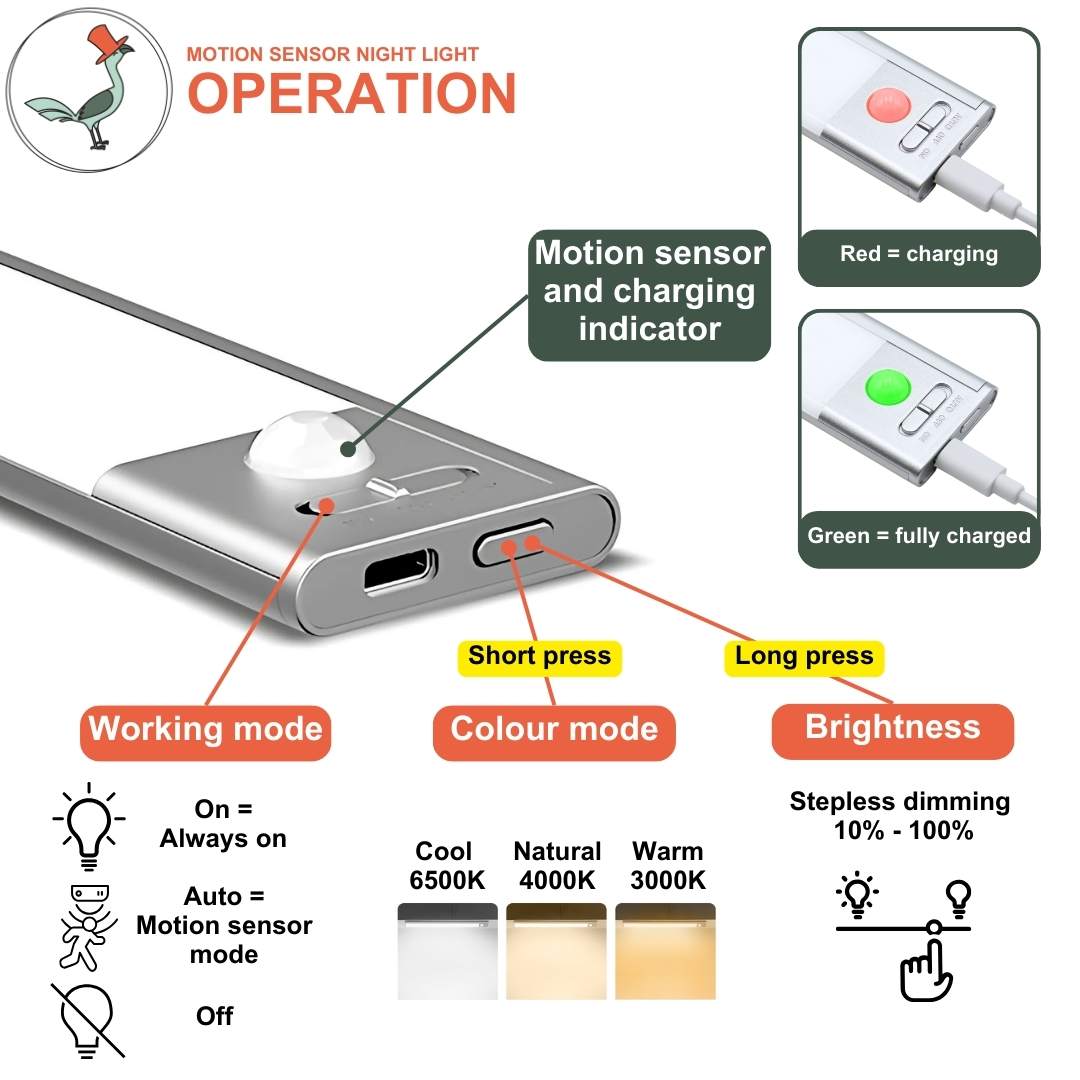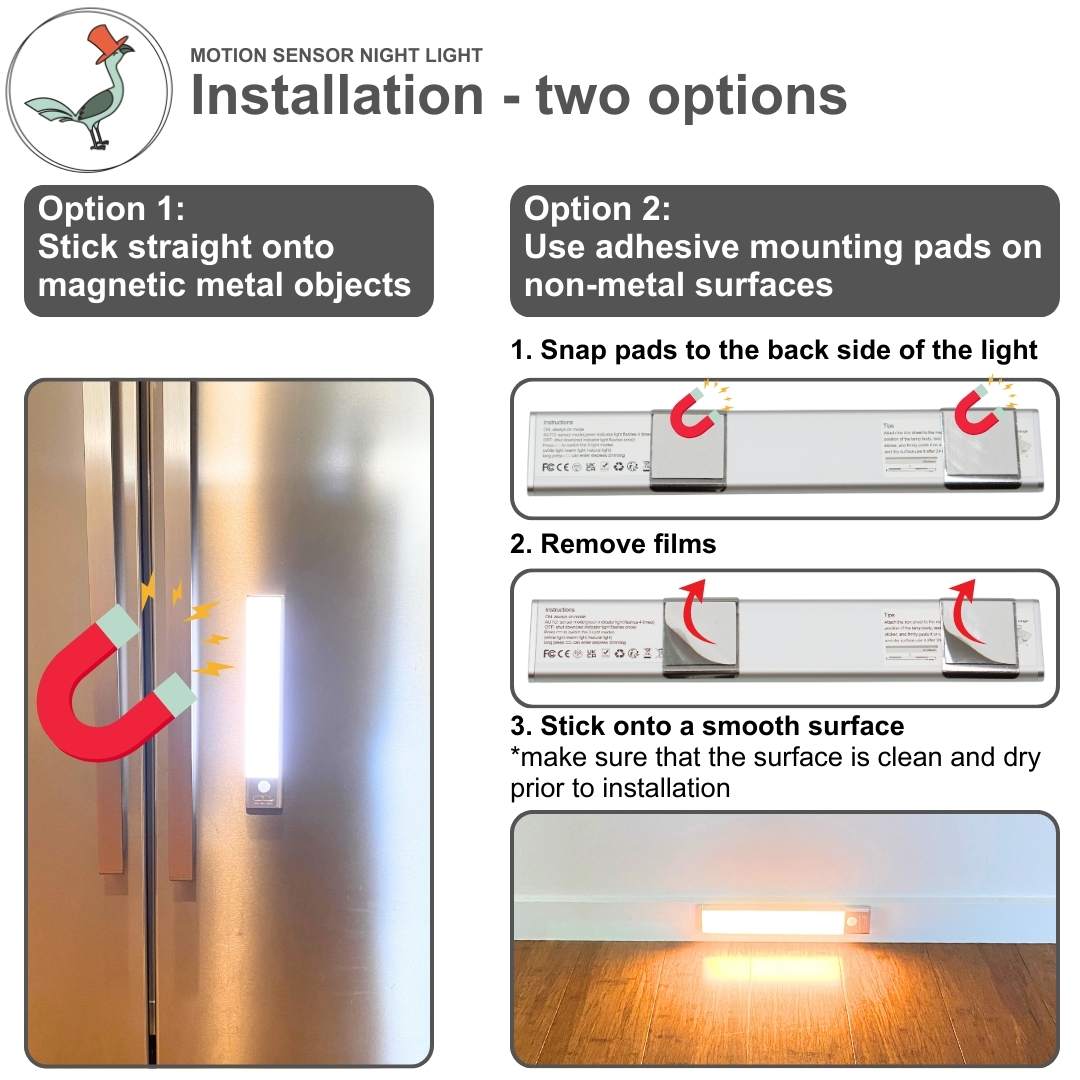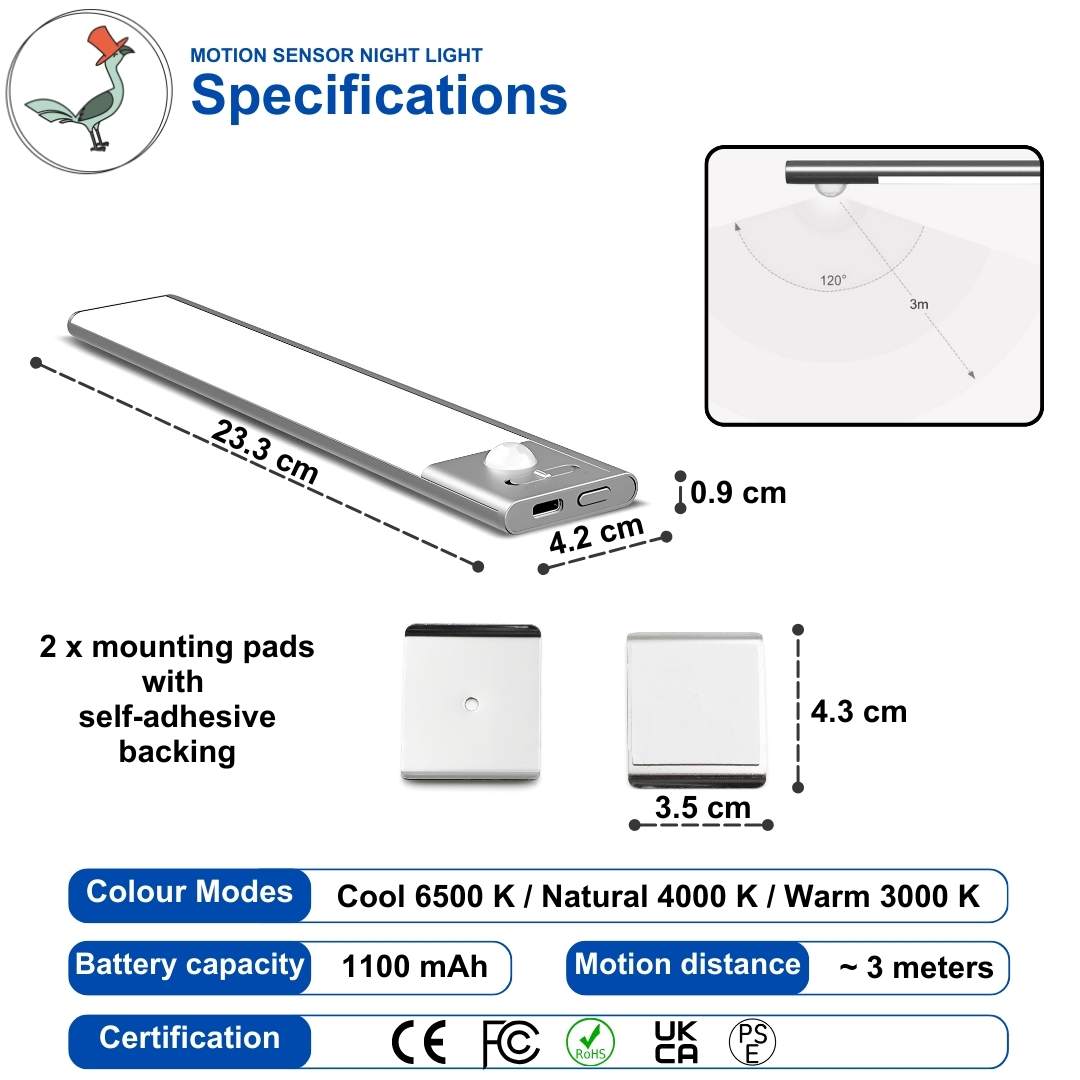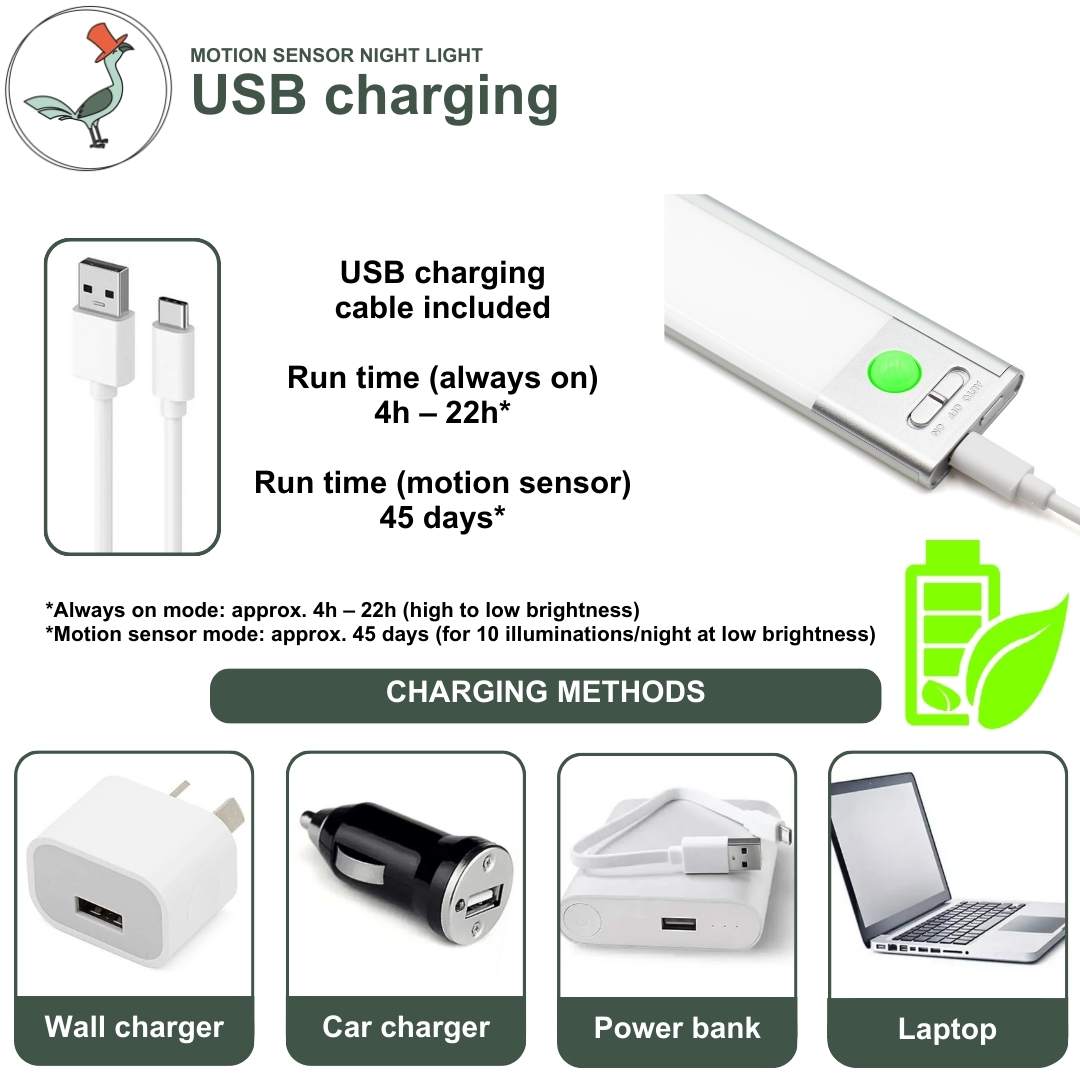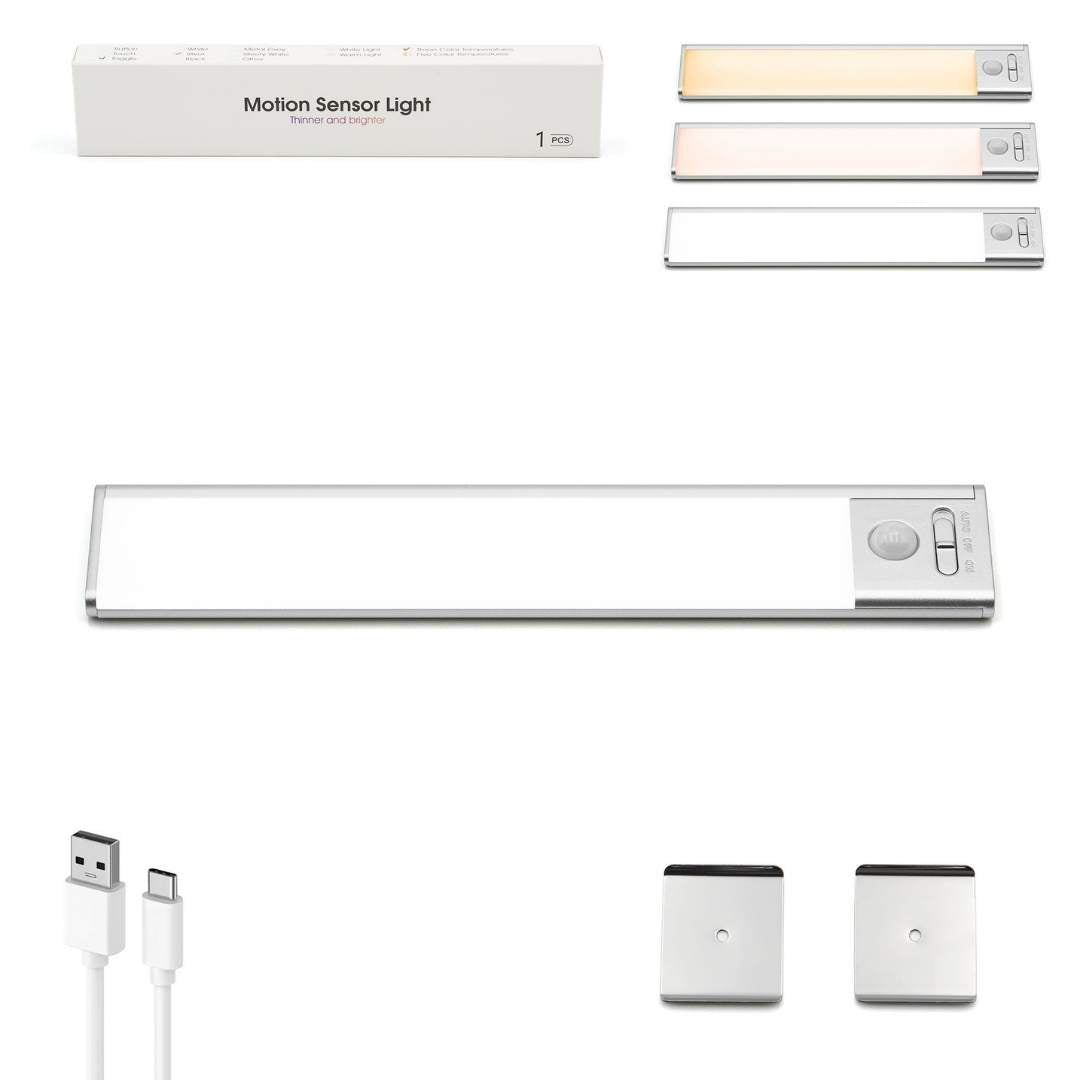Indoor sensor lights are a convenient, versatile and practical option for lighting up dark indoor spaces in the home. Here's why!
NO WIRING REQUIRED: Battery-powered lights don't need to be connected to your home's electrical wiring. This makes installation much simpler and allows you to place the lights wherever you need them without the constraints of wiring locations. Usually, indoor sensor lights come with adhesive backing, or are magnetic such that they can be put onto most metal surfaces such as fridges and metal shelving. Indoor sensor lights with magnets incorporated also come with metal brackets that can be adhered onto any smooth surface, and then the sensor light sticks to the bracket.
PORTABILITY: Since indoor sensor lights operate on batteries, they are portable. You can easily move them around to different areas or even take them with you if needed. This flexibility can be useful for rearranging storage or during power outages.
SIMPLE INSTALLATION: Installing battery-powered lights is generally a DIY-friendly task. You don't need to hire an electrician or deal with wiring, making installation of an indoor sensor light a quick and hassle-free process.
ENERGY EFFICIENT: LED battery-powered sensor lights are energy-efficient, consuming less power than conventional incandescent bulbs and can last a long time on a set of batteries or one recharge. The lifespan of LED lights is such that they can last a lifetime. This can result in cost savings over time.
GREAT FOR EMERGENCY LIGHTING: In the event of a power outage, having an indoor sensor light is invaluable. It can help everyone move about the house safely, preventing falls and lighting up tasks.
CONVENIENT MOTION SENSOR: Indoor sensor lights have a motion sensor. Some can even come with a sound sensor, although the motion sensor is the most common and, generally, the most suitable option. Motion sensors are convenient because they turn the light on automatically when someone passes by. For example, when you open the cupboard door. They conveniently turn off when there is no movement around. It's a practical and energy-efficient way to light up dark areas around the home.
LIGHTING AND FALL PREVENTION: Having indoor sensor lights placed strategically around the home can offer convenience and appeal, such as in wardrobes and under cupboards in the kitchen; however, they are also used for fall prevention. Having motion sensor lights turn on in the dark as soon as you get out of bed, or approach a hazardous corner, or enter the bathroom, can save searching for a light switch and waking others. Not to mention the eye needing to adjust back to the dark when turning main lights off.
Motion sensor night lights offer a convenient and versatile solution for lighting up dark spaces and for fall prevention without the need for extensive installation efforts.













